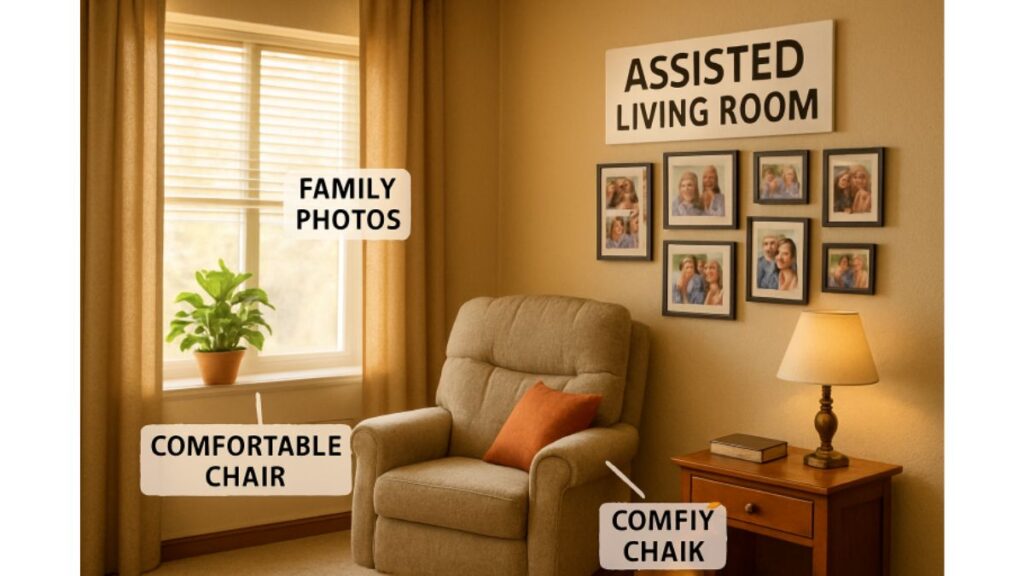Introduction
Transitioning to a long-term assisted living facility is a significant life event, often accompanied by mixed emotions. The process can be daunting, but with thoughtful touches and practical strategies, it’s possible to foster comfort and familiarity even in a new environment. Partnering with supportive communities like The Villas can make the adjustment smoother and help residents experience a true sense of home.
From personalizing your living space to embracing community activities, there are easy and effective steps families and residents can take to nurture belonging, create comfort, and cultivate meaningful daily life within an assisted living setting.
Personalize Your Space
One of the simplest and most effective ways to feel settled in assisted living is to surround yourself with the belongings that matter most. Residents should bring cherished family photos, favorite knick-knacks, or treasured mementos to decorate their space. Placing a familiar chair, beloved lamp, or meaningful quilts in a new room instantly creates warmth and personal history.
Residents can claim ownership over their environment by actively participating in decorating decisions. In many facilities, staff encourage families to help residents arrange rooms to suit individual tastes and comfort, which studies show boosts emotional well-being.
Incorporate Familiar Routines
Routines provide a sense of control and calm, especially during transitions. Recreating morning rituals—such as enjoying coffee by the window, listening to a favorite radio show, or reading before bed—can help anchor residents in their new environment. Staff can support this by learning about residents’ preferences, from meal times to preferred hobbies, ensuring continuity of cherished habits.
Encouraging the establishment of new routines rooted in the rhythms of the community is equally important, such as joining a regular exercise group or participating in weekly games. Structured daily activities are linked to increased happiness and overall satisfaction among older adults.
Engage in Community Activities
Assisted living isn’t just about the physical space—it’s about building connections and friendships. Most communities offer art classes, music sessions, group outings, and lectures to help residents interact, learn, and find purpose. Volunteering, joining book clubs, or attending themed dinners are excellent opportunities for new residents to become integrated community members.
Shared experiences and collective activities combat loneliness and contribute to cognitive health and mental stimulation. Regular peer engagement creates a vibrant social calendar supporting a more meaningful daily life.
Stay Connected with Loved Ones
Maintaining relationships outside of the assisted living community is essential for emotional health. Scheduling regular family visits, phone calls, and video chats ensures continuous contact with loved ones. Many residents find comfort in inviting friends and family to on-site events, creating shared experiences that bridge the gap between old and new homes.
Family members can become active contributors to the community by volunteering or helping facilitate activities, ensuring that each resident feels seen and supported during the transition and beyond.
Bring in Natural Elements
Natural elements like flowers and houseplants do more than beautify a space—they have been shown to relieve stress and lift spirits. Choose easy-care plants such as succulents or snake plants for simple upkeep. Fresh flowers or a small indoor garden can also add a burst of color and life, encouraging a connection with nature even indoors.
Enhance Lighting
The quality of lighting significantly affects mood, safety, and comfort. Replacing harsh overhead fixtures with table lamps, floor lamps, or string lights brings a softer ambiance and reduces the institutional feel. Make the most of natural light during the day; opening blinds and sitting near windows can help regulate sleep patterns and boost overall well-being. The Seniors Guide notes that proper lighting is crucial for seniors’ health.
Incorporate Technology
Technology offers powerful ways to stay connected, entertained, and informed. Personal TVs, tablets loaded with favorite media, and smart speakers with voice assistants can help residents feel more at home. Tablets and smartphones make video chat with family or participating in virtual community events easier. Tech should be accessible and tailored to individual needs, promoting independence and social engagement.
Add Cozy Touches
Personal decor, such as favorite vases, handmade pottery, or heirloom clocks, adds character and individuality to a new apartment. Minor additions, like cozy blankets, plush pillows, or a familiar aroma from a preferred candle, give warmth and a sense of peace. These finishing touches help transform a generic environment into a welcoming, deeply personal sanctuary.
With creativity, patience, and the proper support, making an assisted living environment feel like home is not just possible—it’s a journey filled with joy, discovery, and new beginnings. Embracing these meaningful yet straightforward strategies helps foster an environment where residents can thrive, grow, and truly feel at home.







